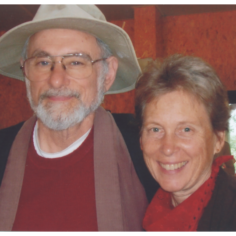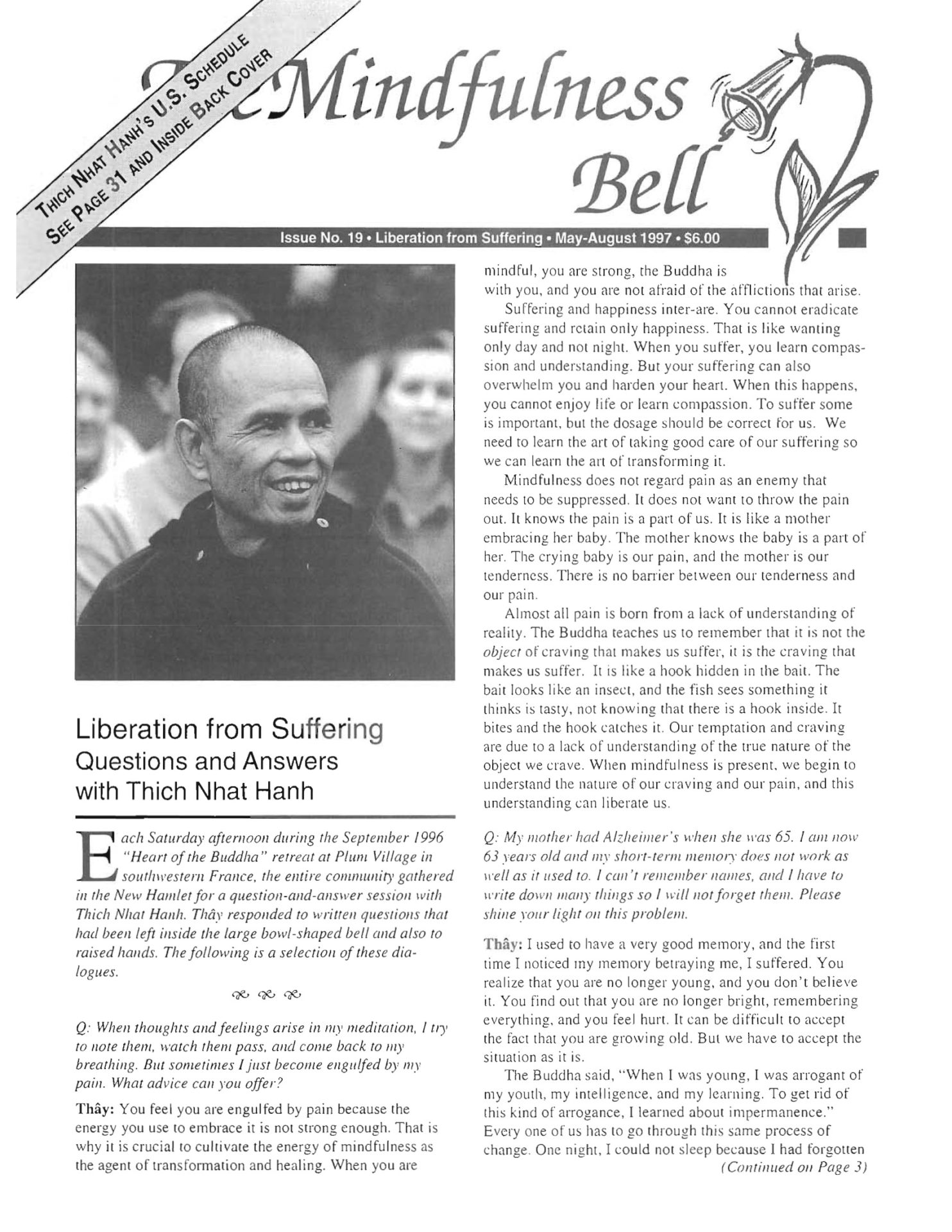By Richard Brady in May 1997
Dharma discussions are a fundamental part of Sangha gatherings, retreats, and Plum Village life. At their best they embody qualities of group meditation, enabling us to enter a place of quiet in which we can stop and listen deeply to ourselves and each other. They are opportunities for us to deepen our understanding of the teachings and find practices which apply to our lives. Dharma discussions have several other important functions.
By Richard Brady in May 1997
Dharma discussions are a fundamental part of Sangha gatherings, retreats, and Plum Village life. At their best they embody qualities of group meditation, enabling us to enter a place of quiet in which we can stop and listen deeply to ourselves and each other. They are opportunities for us to deepen our understanding of the teachings and find practices which apply to our lives. Dharma discussions have several other important functions. During large retreats, especially silent ones, they can be a home base. When retreatants get in touch with painful emotions, these groups are often the place they can go for help. In Sanghas where organizational work is often performed by a small group, they give others an opportunity to be known by the community.
How can our Dharma discussions provide a better space for us to be in contact with our inner buddhas and feel invited to ask for and give support? In our Washington Mindfulness Community groups we begin by giving our names, home communities, and, if needed, request a ride home. This simple practice brings everyone into the discussion. Introductions are even more important in retreat settings where many of us are strangers. During the Plum Village summer opening, Eveline Beumkes suggested a variation on the usual introduction: an internal weather report. Some participants gave bare bones reports: "Stormy, with a few rainbows." Others described the nature of their storms and rainbows. Some reported on their emotional states. These reports allow group members to feel safe, establish connections, and open the way for further sharing.
Creating an atmosphere where all participants feel invited to share can be challenging. When the number in our Sangha's group exceeds 20, we divide into two. Even in smaller groups, some people hardly ever speak. Some of the discussions I feel best about are the few in which none of the senior members of the community felt called to speak. When senior members sit quietly and listen, they empower every member to share his or her own experience of the Dharma. What a strong message! After a recent discussion at Plum Village, a newcomer shared with me that she did not feel ready to speak but hoped she would next time. During that particular session, several of the participants had spoken three or four times. I began our next one by asking everyone to share only once, waiting to speak again until everyone had had an opportunity. This time my quiet friend was the first to speak. She thanked me afterwards for my encouragement. I don't know whether we ought to make such suggestions routinely, but we might at least make them privately to Sangha members who speak frequently.
When Thay answers questions from his personal experience of Buddhist teachings, he helps make the teachings come alive and be accessible to retreatants for use in everyday life. Dharma discussions have this same goal: to help us see connections between our experience and Buddhist teachings, to be "lamps unto ourselves." To accomplish this, participants need to look within and share from their own experience. After our Sangha listens to a tape of Thay, we begin the discussion with a reminder: we now have an opportunity to share where the talk has touched us, something from our practice, or some success or difficulty to which others can speak. Leaders can encourage reflection by asking questions. In a recent discussion, a participant asked about the meaning of "true self." I asked if he was requesting that people talk about their experiences of being in touch with their true selves. His "yes" led to deep sharing about vulnerability, compassion, and self-acceptance, and avoided conceptual answers.
At new groups, I sometimes mention the importance of periods of silence. I have observed a connection between the depth of the discussion and the quality of the silence from which it emerges. Often, one sharing immediately follows another, as if there were pressure to keep the conversation going. Inviting the mindfulness bell at these times is particularly appropriate. When silence stretches to the point where it feels unproductive, it can be difficult for me to decide whether to return to the previous topic or to move on to new concerns, to ask the group a question or to share an experience of my own. My ability to see how best to facilitate reflects the degree to which I am present.
Group members occasionally address questions directly to the facilitator. At these times, I like to sit back, listen, and learn. When I know that anyone in the group may have a helpful response to a question, I am less tempted to jump in and teach. By inviting others to answer first, we can avoid turning group discussions into two-person conversations with an audience. If a discussion has lost contact with Buddhist teachings, I may ask how the Dharma might be of assistance. If it becomes absorbed with the teachings in a disembodied way, I might ask if someone has an illustration from his or her life.
Last fall, our Sangha had several special Dharma discussions. At our family and friends weekend, each person shared what he or she had been looking for in first coming to the Sangha, what had worked, and what new directions he or she wished for. A commitment to begin a major evaluation of our activities resulted from this discussion, as well as a deeper appreciation of each other. We devoted two evenings to similar discussions where every participant, new and old. spoke from the heart, many affirming their connection to the Sangha. We experienced a deep sense of community. Now our Sangha is working to make this experience an enduring reality.


